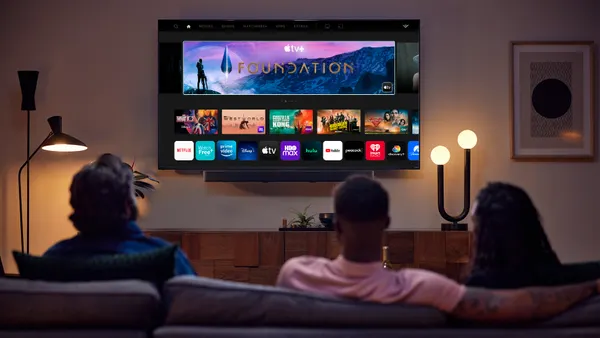Dive Brief:
- Ad buyers expect a 6% overall increase in 2021 budgets compared to estimated actual spend in 2020, but have concerns about the end of third-party cookies, the loss of identifiers and the need for first-party data and cross-platform measurement, per the IAB's 2021 Marketplace Outlook Survey that was shared with Marketing Dive. However, 41% of buyers don't know if their stakeholders understand the ramifications of third-party cookies' demise and the changes to identifiers, while more than a third believe they need more first-party data.
- Buyers also plan to shift strategies to better meet consumers as behaviors have changed due to "continuing societal, health and market challenges." Half plan to increase ad tactics to promote e-commerce options and drive e-commerce sales, 47% plan to increase creative testing, 41% plan to increase testing for incremental reach, and 41% plan to shift away from media that presents upsetting, controversial and inappropriate content from users.
- While cause-related and mission-based advertising increased in the first half of the year, performance marketing notched upward in Q3 and is expected to be a focus in the new year, with 64% of buyers planning to ramp up its use in 2021. Meanwhile, diversity and inclusion is a priority, with half of buyers looking to do more business with minority-owned media companies, though many (51%) don't know if their companies have a list of such businesses that they can utilize.
Dive Insight:
The IAB's 2021 Marketplace Outlook Survey paints an optimistic picture for the advertising landscape in the new year as budgets start to rebound following a year marked by pandemic-related pullbacks. However, the months ahead still hold several concerns for marketers, primarily around data privacy, ad tracking and strategic plans as pandemic-spurred consumer behaviors calcify.
The good news for advertisers is that ad budgets are expected to increase. Unsurprisingly, that rise is driven by digital spend, which is expected to jump 14% while traditional media spend dips 5%. This continues a trend showcased in an earlier IAB survey that found advertising executives expect spending on digital ads in the U.S. will grow 6% this year, contrasting with an 8% decline for the broader ad market. In 2021, more than half of budgets will be made up of social media (16%), paid search (16%), digital display (14%) and digital video (13%), including OTT and CTV, eclipsing digital audio excluding podcasts (5%), podcasts (4%) and digital out-of-home (3%), per the IAB.
While buyers feel reasonably prepared for the loss of third-party identifiers, they might not have a full understanding of what the loss means for their capabilities when it comes to retargeting, handling audience segmentation, implementing addressable marketing and creating cross-device, multitouch attribution models. Along with not knowing whether stakeholders understand the new landscape (41%), buyers also report not having enough first-party data (37%) and are concerned about burning through budgets as they navigate cross-platform management (28%).
With Google's plan to end support for third-party cookies by early 2022 and Apple's decision to require opt-in consent for its Identifier for Advertisers (IDFA), alternatives to current methods of consumer and ad tracking have become a focus of marketers. Verizon Media, demand-side platform The Trade Desk and data management platform Lotame are among the vendors that have recently rolled out cookieless tracking solutions. Meanwhile, CPG companies are trying a variety of approaches amid a scramble for first-party data.
Digital video buyers are expected to shift 21% of their linear TV budgets to CTV, citing the format's targeting and efficiency (81%) and incremental reach (55%) as the top reasons for the shift, ahead of its capabilities around optimizing creative (27%), cost effective CPMs (24%), proven ROI (18%) and better consumer experience (16%). In kind, CTV/OTV was cited by digital video buyers shifting budgets as an improvement over linear TV for its ability to reach younger audiences (58%), fast optimization (52%), easier to cancel (48%), ability to measure ROI (46%) and efficiency (41%). CTV usage has surged as consumers have spent more time at home during the pandemic, leading brands including Kraft Heinz, Molson Coors and L'Oréal to tap into the growth.













